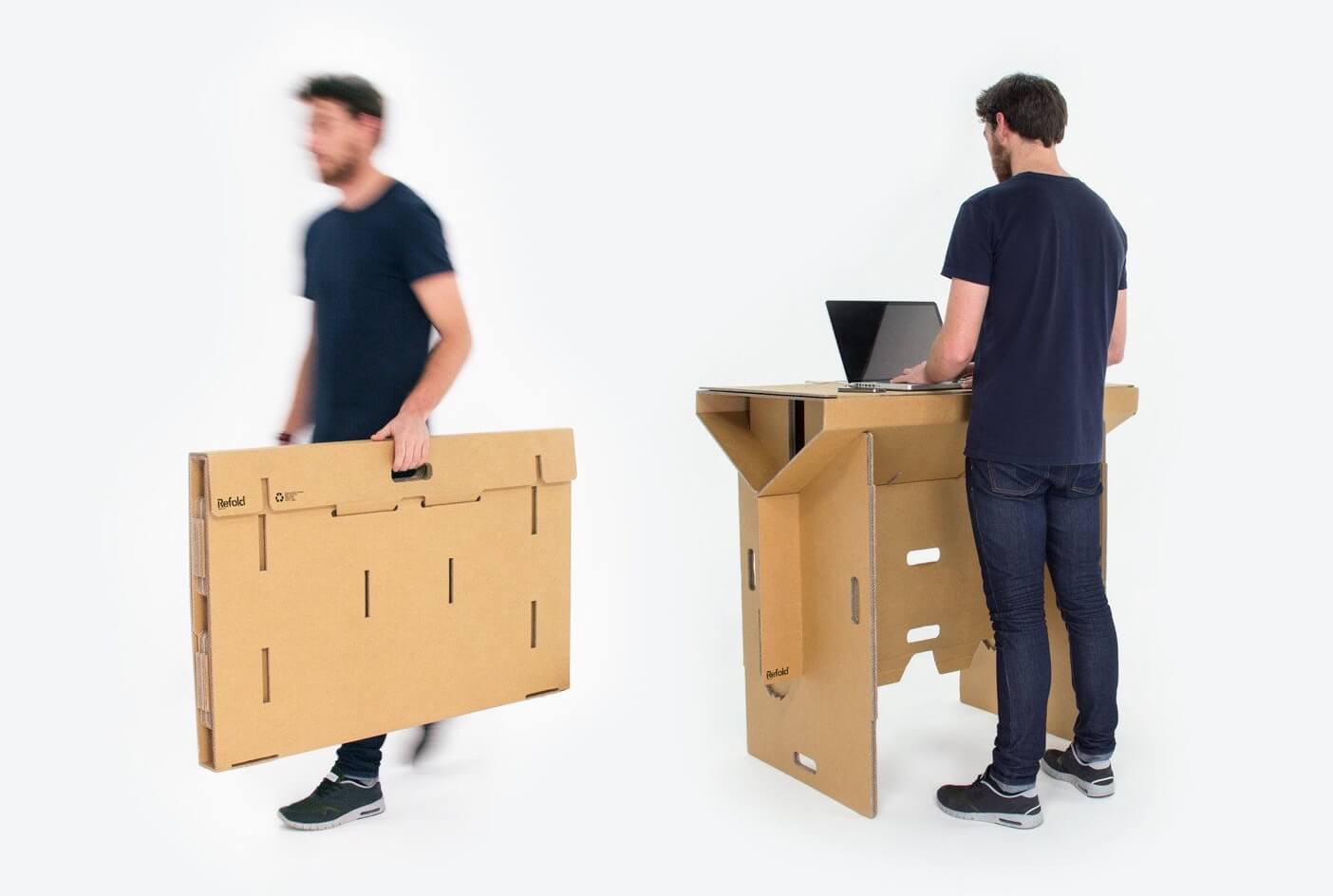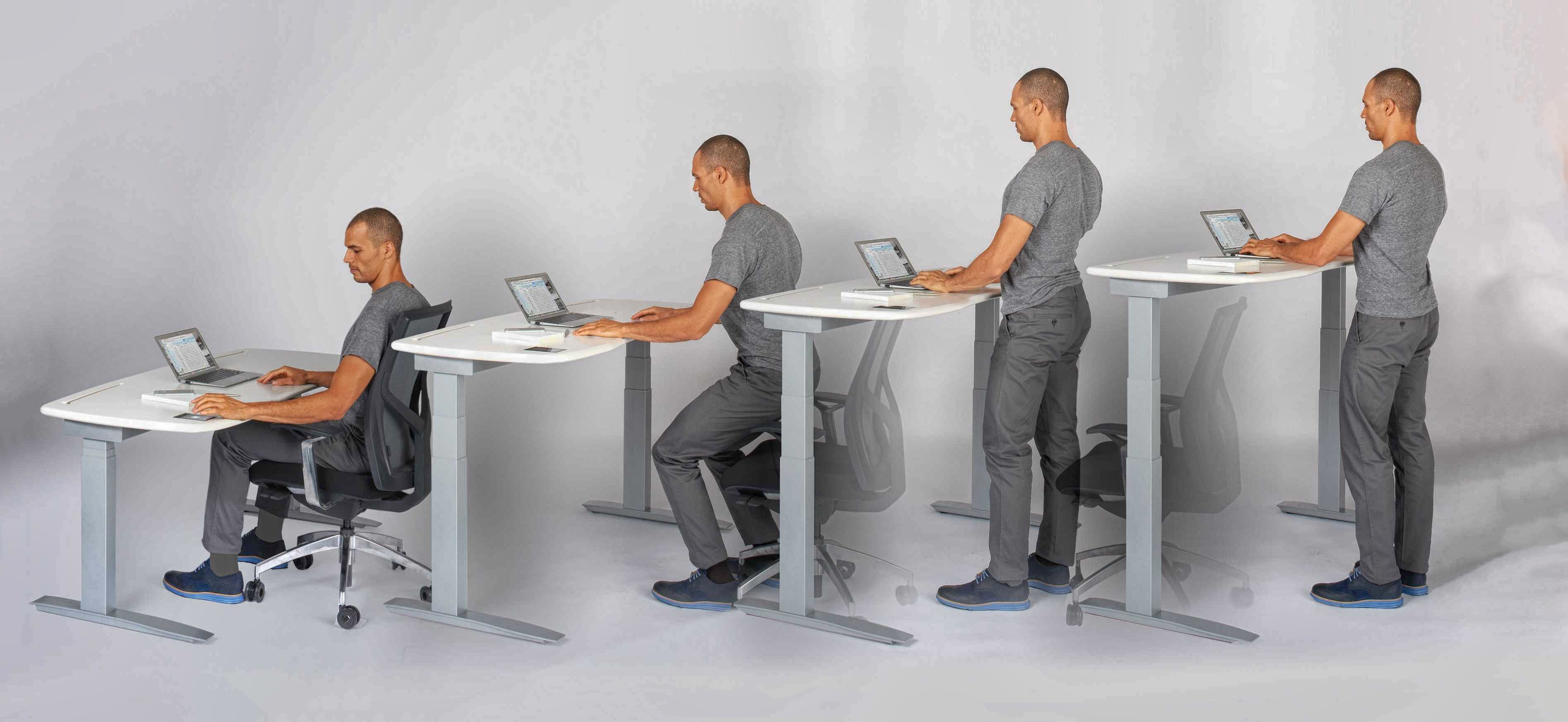It can be easy to talk yourself out of standing at a computer desk. Besides the feat of parting with your favorite office chair, the price of most adjustable models would be enough to discourage many people from inquiring further. Truth be told, however, the transition doesn't have to be an expensive all-or-nothing affair.
Read on for a practical outlook on what you can expect from your first standing desk, especially if you're still torn between building something yourself and having one shipped to your door.

Note: This feature was originally published on December 26, 2016. We've revised, added to it, and bumped it as part of our #ThrowbackThursday initiative.
Don't: Buy a standing desk expecting it to be comfortable out of the box. Not only will it take time for your body to adjust to standing for a majority of the day if you're used to sitting for pretty much all of it, but you may also have to invest in additional hardware and accessories. For instance, many if not most standing desks are sold without the equipment you'll need to get your monitor where you need it. Although marketing pictures often show models smiling down at their display, this wouldn't be comfortable for long and it actually seems misleading to imply that it's a viable way to set things up for the average person, who would typically want the display somewhere around head-height.
Do: Consider buying a standing desk if you're uncomfortable with sitting at the PC all day, but not under the impression that it's somehow better to stand in the same place for eight hours straight instead of sitting. Finding a way to be in a variety of positions throughout the day is ideal, which makes it easy to understand the rising popularity of adjustable standing desks, though non-adjustable options might not be as much of a sacrifice as they may seem.

Don't: Think you have to spend big. Adjustable desks commonly approach $1,000 and many are well beyond, but you can build a basic standing desk by mounting a finished piece of plywood to the wall. Googling "diy standing desks" returns a deluge of unique ideas that would do the trick, even if it's only for temporary testing. Quick and dirty designs to modify your existing desk range from stacking books, boxes and printer paper on top for raising your keyboard/mouse/monitor, or cinderblocks underneath to lift the entire desk.
Tip: If you're building a standing platform, go larger than you think. Besides the potential for tippage, your posture/comfort will suffer if your feet overlap the edges of your platform as you change stances.

Don't: Be completely convinced that your standing desk needs to have an adjustable height (unless, of course, you do...). It's easy to see the appeal of a workstation that shifts between sitting and standing, particularly if you're looking to take things slowly at the start, but getting used to being on your feet for a majority of the day shouldn't be too hard for the average healthy adult and you can still find ways to be in a variety of positions without having your desk move at the touch of a button.
Do: Have a plan for wire management, especially if you care about aesthetics and intend to go DIY. Keeping your cables clean may be less of a concern if your prefabricated desk comes with integrated channels for routing everything, but even so, you might find that you need extension cords for your displays and other devices to reach their destination. Aiming for a high degree of adjustability tends to be the goal of going for a standing desk and that will only make matters trickier.

Don't: Stand at your PC in footwear with raised heels or anything else that's going to compromise your posture. This will cause considerably more discomfort in virtually every body part involved with standing. Wearing flat-bottomed shoes results in less stiffness and standing in only socks or barefoot should prove to be the least bothersome over long hours. If the floor itself is unpleasant to stand on, many people put a rubber mat or some other form of padding where they work, though others suggest this is counterproductive because the comfort dissuades you from moving, potentially encouraging you to remain in poor positions longer.
Tip: Standing at a desk makes you more alert/less drowsy and anecdotally, I feel more prone to looking around the room (it's recommended that PC users take such eye breaks).
Do: Take breaks. This should include sitting occasionally, and although this would seem like the point at which adjustable desk owners would lower their workstation to keep going, you might find that by the time you're ready to sit, you're also ready for a break from work and walking a few feet away from the PC is no big deal when you really want to rest. As unintuitive as it may seem, walking around sometimes resets the feeling of fatigue or stiffness that sets in after prolonged sessions at a standing setup, as will stretching.
If there's no time to take a break, leaning for a few minutes is often enough of a breather and it might be worth buying a soft wrist-rest to double as an elbow-rest when you're taking a load-off. It's also nice to have something a few inches or more off the ground to put a foot on as you shift your weight around.

Don't: Assume you won't be able to find a way to sit down while still using your 'standing-only' workstation. A drafting stool would be an easy and affordable solution to sitting higher than conventional computer chairs. Conversely, you may also be able to get away with raising your regular office chair to its max height, lowering your display to the standing desk's surface (which should put it about eye-level) and then moving your keyboard/mouse to your lap.
If you want to get creative, you could go as far as having a TV on your desk and a couch in the distance with a wireless keyboard/mouse. This is all without mentioning the fact that you could hop on a laptop or another mobile device depending on what you're doing and then return to your PC later.
Tip: Putting your keyboard/mouse on a movable platform will make it easier to transition away from your non-adjustable standing desk. Put some casters on the bottom of the tray and it will swivel with you as you stand.
Do: Prepare to be hungrier and thirstier if you transition to standing most or all of the day. Standing burns more calories than sitting (50 more an hour according to Google), and as mentioned, you'll probably be doing more than just standing as it quickly becomes habit to roam or stretch during idle moments. With all the extra moving going on and replenishments around, don't be surprised when you elbow the first or fifth thing off your desk.
Shopping Shortcuts:
To wrap up, here are some top standing desk recommendations, from least to more expensive and downright luxurious...
- Spark by Ergodriven cardboard "Start Standing Now" desk
- Readydesk 2 standing desk converter
- FlexiSpot M2B height adjustable computer riser
- Luxor stand up desk, crank adjustable
- Considered overall best for most: Jarvis Standing Desk Bamboo
- Top luxury choice, many styles: Xdesk Terra 2s
- Minimalist style: Herman Miller Renew
